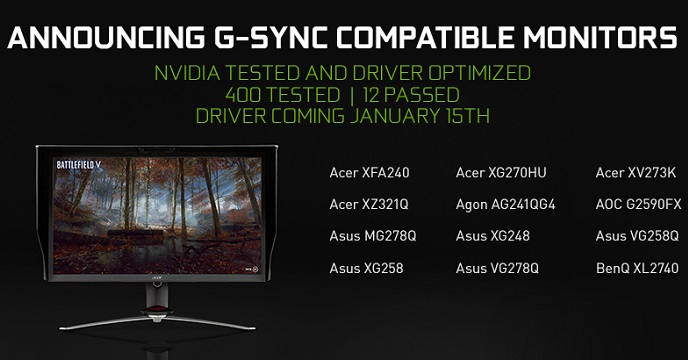Nvidia has admitted to defeat, at least when it comes to adaptive sync technologies. Team green announced a list of G-Sync compatible monitors at CES 2019. The monitors support AMD Freesync, and a software solution from Nvidia will bring its adaptive sync technology to the displays.
Nvidia’s CES 2019 keynote included some information on G-sync compatible monitors that will deliver variable refresh rate (VRR) with GeForce graphics cards. Nvidia tests and vets for the G-Sync performance of monitors that receive its “G-Sync compatible” label. There have been 12 monitors that have officially been labeled as “G-Sync compatible.”
Nvidia also said that users will be able to turn on a new option in the Nvidia Control Panel for VRR monitors yet to be validated by the company. This means that hundreds of Freesync monitors may now support Nvidia variable refresh rate technology following the new Nvidia driver release later this month.
The new Nvidia driver will be out January 15, and it will automatically detect whether an Nvidia-certified VRR monitor is being used. The driver also brings the aforementioned control panel option for non-certified monitors, but Nvidia has said the tech may not work properly.
Nvidia continues to push G-Sync specific monitors, with new G-Sync Ultimate monitors supporting more advanced HDR. Nvidia’s new big format gaming display (BFGD) was also shown off at CES 2019, with a 65-inch 120Hz 4K display for a cool $5,000.
Nvidia G-Sync and AMD Freesync have been trading blows for years, with many fans frustrated by the hardware based G-Sync. The hardware exists in certain monitors, and causes them to cost significantly more than Freesync competitors. AMD’s Freesync is an open-source, software approach to VRR that is supported by devices like Xbox One X. Nvidia’s move to a software-based G-Sync suggests they’re admitting defeat as AMD’s solution offered similar performance without the cost increase.







